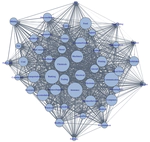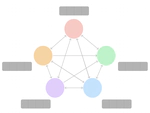I am an Assistant Professor of Finance at the Shanghai Advanced Institute of Finance (SAIF), Shanghai Jiao Tong University. I completed my Ph.D. in Finance at the University of Illinois Urbana-Champaign (UIUC), under the supervision of Tim Johnson, Dana Kiku, and Mahyar Kargar.
My research lies in macro-finance and asset pricing, with a particular focus on networks and volatility. I am particularly interested in understanding the economic and asset-pricing implications of idiosyncratic volatility spillovers that arise from firms’ networks—such as trade and other interfirm connections. Put differently, my work seeks to uncover the microfoundations of aggregate volatility risk and the various channels through which idiosyncratic risk is transmitted.
Education
Ph.D. in Finance, 2020 - 2025
University of Illinois at Urbana-Champaign
MS in Applied Mathematics, 2019 - 2020
University of Chicago
BS in Mathematics, 2015 - 2019
University of Chinese Academy of Sciences
Exchange Program, 2018
Carnegie Mellon University
Interests
- Macro Finance
- Asset Pricing
- Idiosyncratic/Aggregate Volatility
- Network
Job Market Paper
I adopt a network perspective to provide a microfoundation for aggregate volatility risk. Theoretically, I develop a dynamic multisector model and show that intersectoral idiosyncratic volatility spillovers—arising from a persistent and asymmetric trade network—generate both the origins and variations in aggregate volatility. These spillovers affect asset prices through the volatility-risk channel and, when investors prefer early resolution of uncertainty, through the cash-flow news channel as well. Empirically, I construct two theory-motivated network factors that capture the dynamics of idiosyncratic volatility spillovers and show that they significantly predict future aggregate volatility and are priced as volatility risk factors.
See the latest version
Working Papers
(with Tim Johnson)
This paper examines the microfoundation of macroeconomic tail risk, defined as the frequency of extremely negative GDP downturns relative to what is predicted by a normal distribution. We demonstrate that firm-level productivity shocks, even when normally distributed, can be amplified into large macroeconomic tail events through a dynamic production-based input-output network, challenging the traditional view that only sufficiently large firm-level shocks impact the aggregate market. The evolving network structure, driven by technological shocks, hinders risk diversification across firms, delays the mean reversion of aggregate volatility, and causes volatility to cluster from local to global scales over time. In bad times, when idiosyncratic risks are high and firms treat all inputs as complementary, these risk spillovers can accumulate, resulting in severe GDP downturns.
(with Jonathan Brogaard)
Credit Default Swap (CDS) spreads exhibit network effects due to firms' default interdependence. This paper employs Graph Neural Networks (GNNs) to predict CDS spreads by modeling firms as nodes and idiosyncratic volatility spillover measures as directed edges. GNNs capture inter-firm network dynamics, improving prediction accuracy by over 50% compared to traditional models without edge features. We enhance the GNN with node- and edge-attention layers, identifying key nodes (e.g., manufacturing and intermediary firms) and edges (e.g., connections between intermediary, retail trade, or information firms and other firms) as critical to CDS spread prediction.
Contact
- chenchen@saif.sjtu.edu.cn
- (+1) 773-219-4229
- 211 West Huaihai Road, Shanghai, 200030


